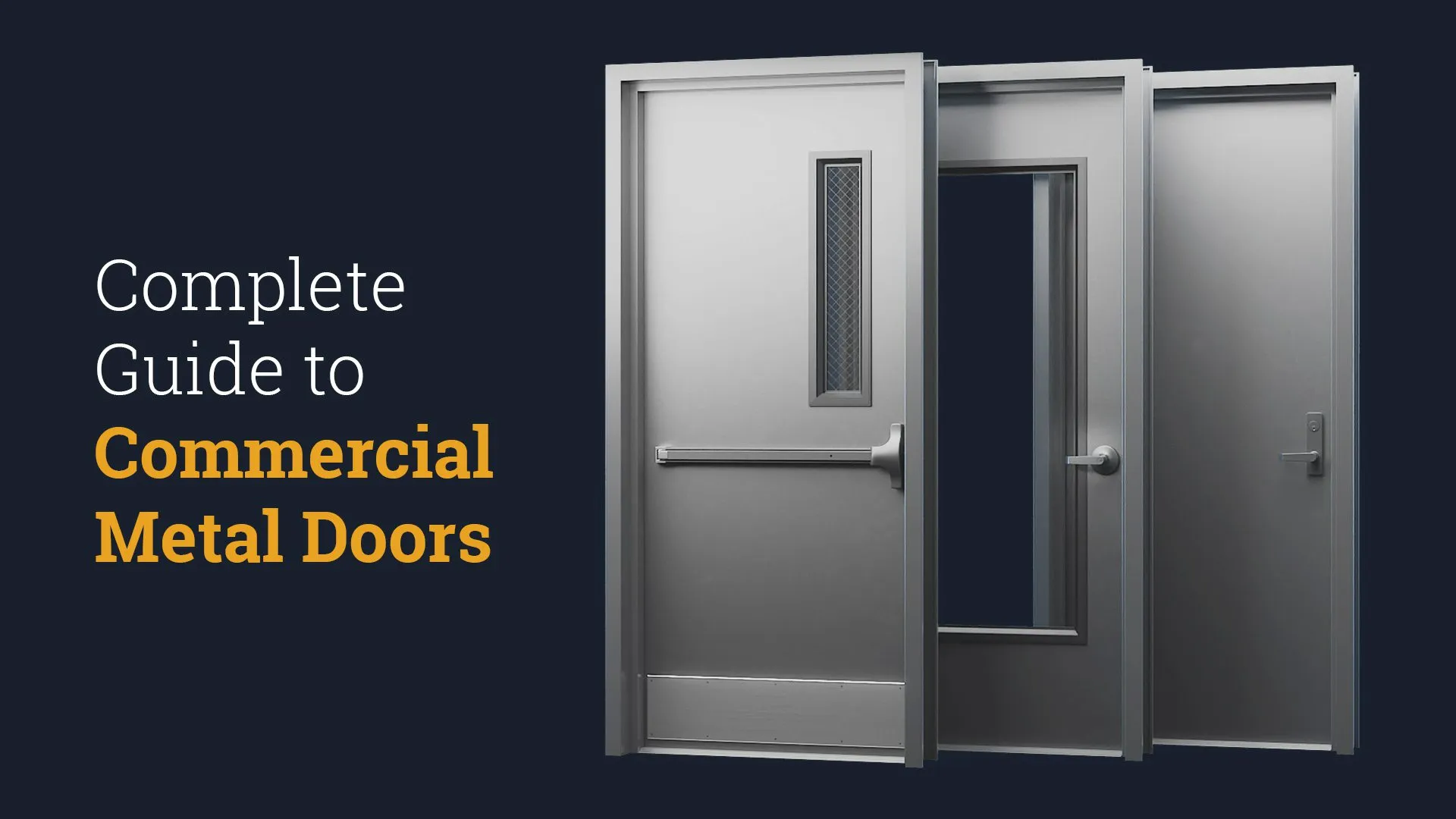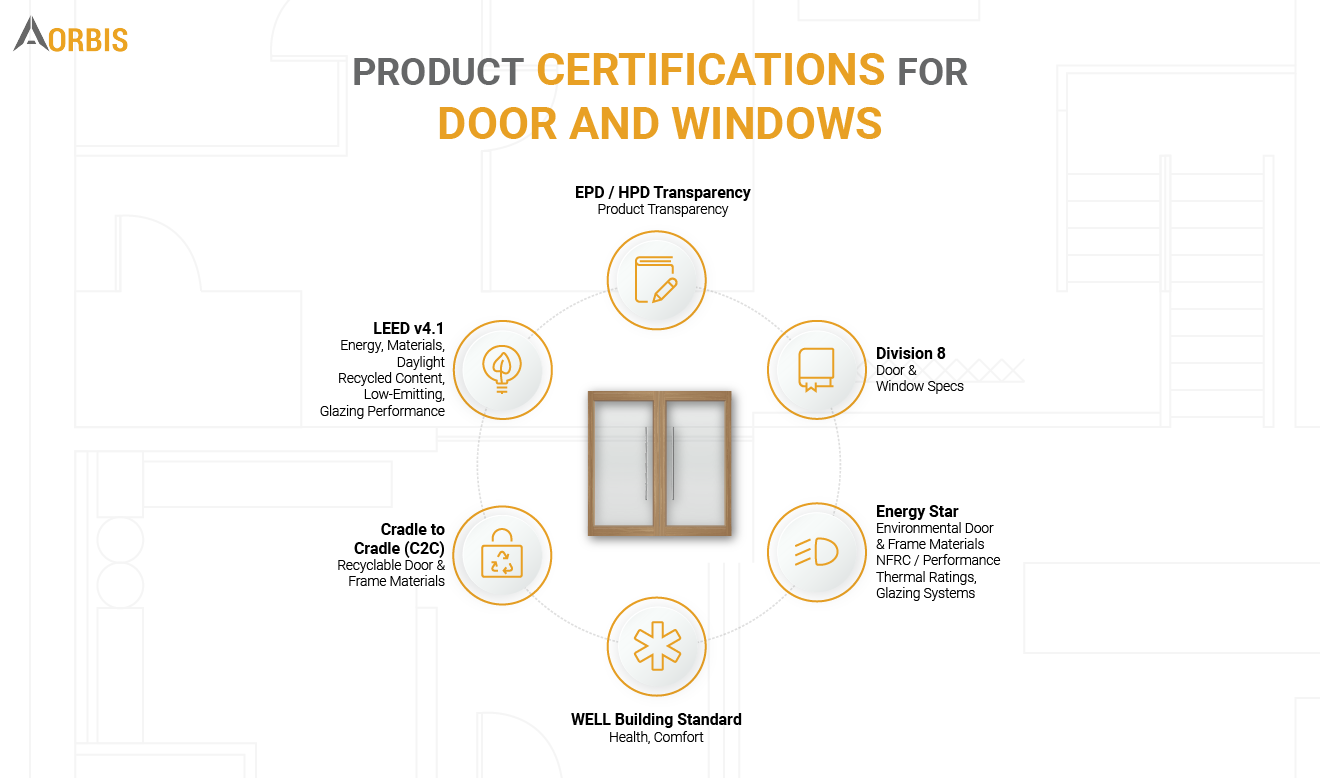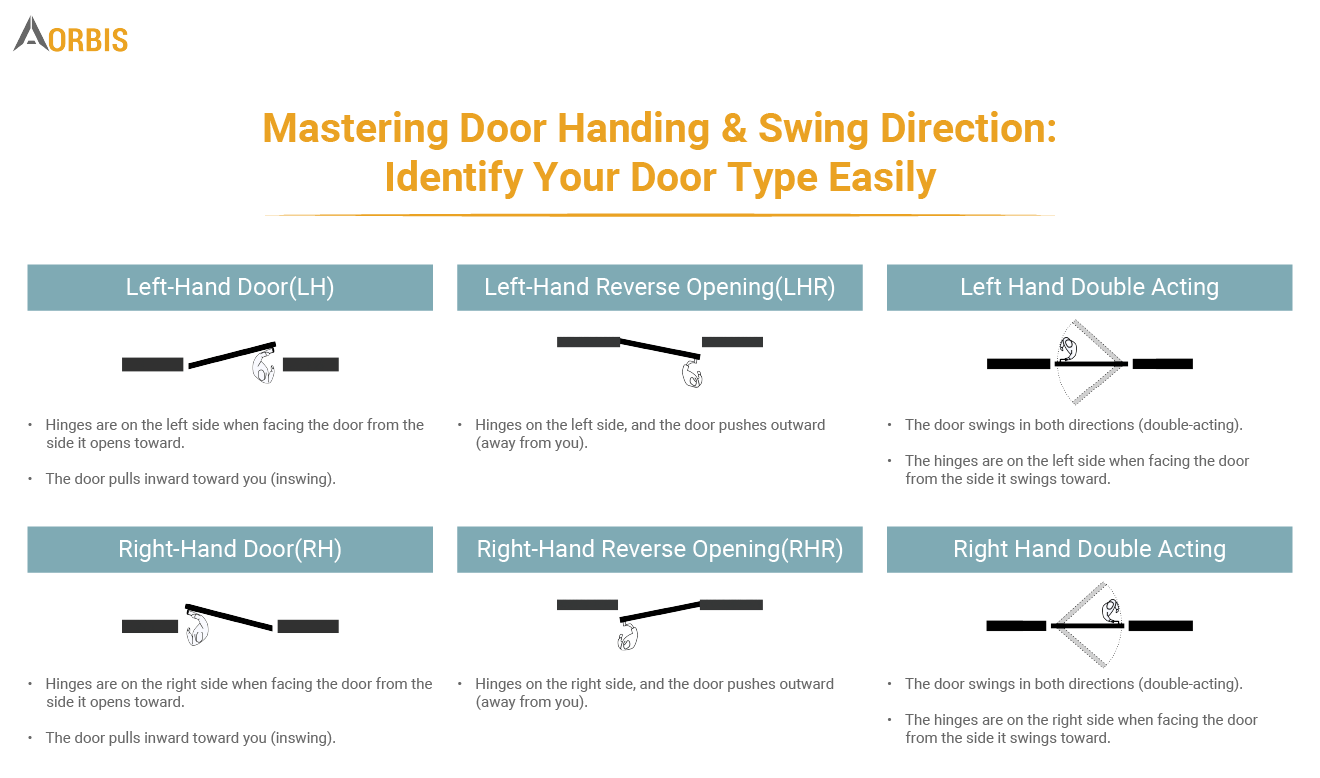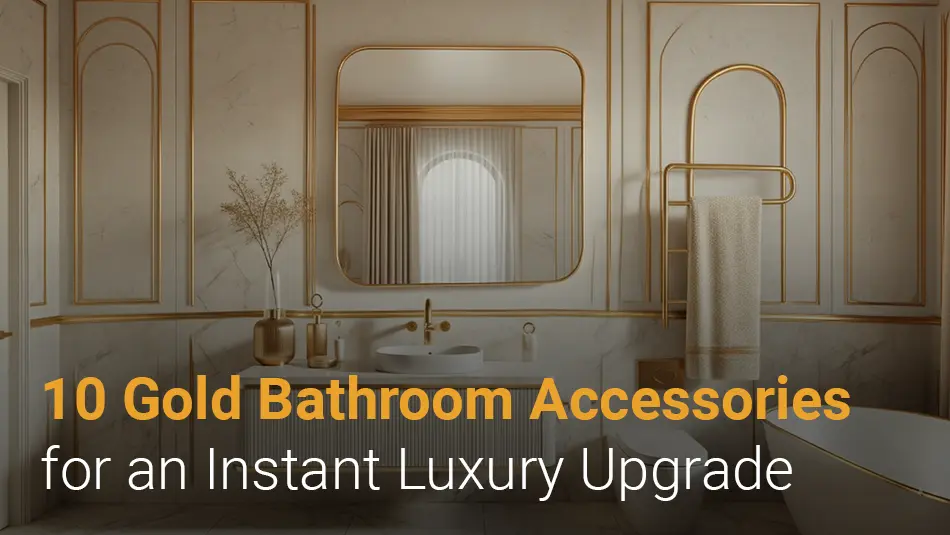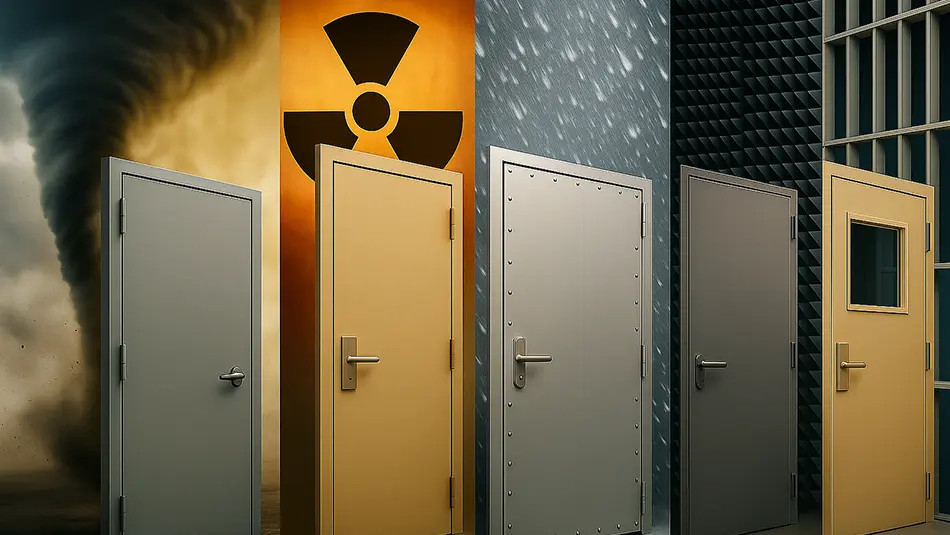Complete Guide to Commercial Metal Doors
In commercial space, the role of construction is to strike a balance between functionality, safety, and aesthetics. Doors and locks in the commercial space are quintessential for safety and aesthetic appeal.
Today, the use of metal doors and frames in commercial spaces has seen a notable shift. They are no longer just used for storerooms and warehouses but largely incorporated into offices, retail stores, healthcare facilities, and educational institutions. There is growing demand of commercial metal doors because of their unmatched durability, enhanced security, and fire resistance qualities.
As building codes are becoming stricter and performance requirements more complex, the demand for metal doors is surging. In this blog, we will take your through types metal door used, its face designs, metal door frames and more.
Types of Commercial Metal Doors
For commercial spaces, metal doors offer many options. Commercial metal doors are ideal for storefront doors or as metal frame interior and exterior doors. They come in different types of metal and designs for specific purposes.
While utilizing these types of doors, architects and contractors should always consider updated standards, durability, performance, and compliance. Below is a breakdown of the key types of metal doors used in commercial spaces:
1. Hollow Metal Doors
Hollow metal doors are the most common choice for commercial buildings. It has a strong metal exterior and a hollow core. The core has a honeycomb design made with insulating materials like polystyrene or polyurethane. Hollow metal door frames key features are:
- Durable and impact-resistant
- Hollow metal doors offer highest fire-resistance for up to 3 hours.
- Reduce energy consumption by maintaining regulated internal temperatures.
- Widely used in retail, healthcare, warehousing, and industrial facilities
2. Metal-Clad Doors
Metal-clad doors are wooden doors with a metal exterior. Metal sheets applied to doors are usually of steel or aluminium, which adds strength and durability to the door. Metal clad doors are a good exterior door type for commercial buildings that are both aesthetically appealing and durable. Key features are:
- Enhanced security
- Resistance to warping and impact
- Exterior commercial entrances
3. Stainless Steel Doors
Stainless steel material makes exterior metal doors for commercial use in areas exposed to extreme weather and climate changes. It also resists chemicals or high-moisture environments because of its corrosion-resistant properties. Key benefits of stainless steel door frames include:
- Reinforced steel frames
- Tamper-resistant hardware
- Multi-point locking systems
- Fire or blast rating options
- Integration with electronic security systems
- Ideal to be used in banks, data centers, and utility rooms.
5. Fire-Rated Metal Doors
Fire-resistant metal doors are a type of steel door engineered to endure fire. Based on its ratings, it stops fire for 30, 60, 90, and 180 minutes. Hollow metal framed doors have the highest fire withstanding rating of three hours. These doors are vital for stairwells, corridors, and exits in commercial or industrial buildings. To comply with building codes, fire-rated doors must:
- Maintain structural integrity during fire exposure
- Limit heat transfer to the opposite side
- Certified under national/international standards, i.e., NFPA 80 standard for Fire Doors.
Metal Door Types by Face Design and Construction
1. Flush Metal Doors
These doors have a smooth and flat surface on both sides. Flush doors feature a minimalist design that allows for easy maintenance and seamless integration with various styles. Flush doors work well in the following situations:
- High-traffic commercial areas
- Institutions and industrial facilities
- Professional and aesthetic environment.
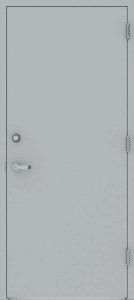
2. Paneled Metal Doors
Paneled metal doors have recessed or raised panel designs to add dimension and elegance to commercial doors. These doors combine the durability of metal with the aesthetic appeal of traditional paneling. Options commonly include:
- 2-panel, 6-panel, or 8-panel configurations
- Classic or contemporary panel styles
- Ideal for institutional, civic, and upscale commercial projects

3. GrainTech Finish Metal Doors
GrainTech doors are metal doors that resemble natural wood. It has the best of both the appeal of visuals and the strength of the metal. These doors are engineered wood-grain finish, and are highly in demand in commercial spaces like
- Hotels and healthcare organizations
- Offices and lobbies
- Education and healthcare facilities
- Projects requiring a warm, upscale aesthetic without sacrificing performance
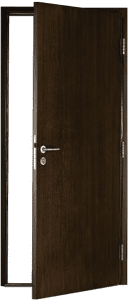
4. Vision Lites Metal Doors
Vision lites metal doors feature glazed openings with some to allow light and visibility through the door. The window panels come in different shapes and sizes. Vision lite designs can be rectangular, circular, narrow strips, or full-glass panels.
The use of vision lite metal doors in commercial spaces depends on safety and design needs. It provides enhanced visibility, improved safety, and a touch of design sophistication. Common applications include:
- Offices
- Hospitals and labs
- Classrooms and corridors
- Entrances requiring visual access or light flow
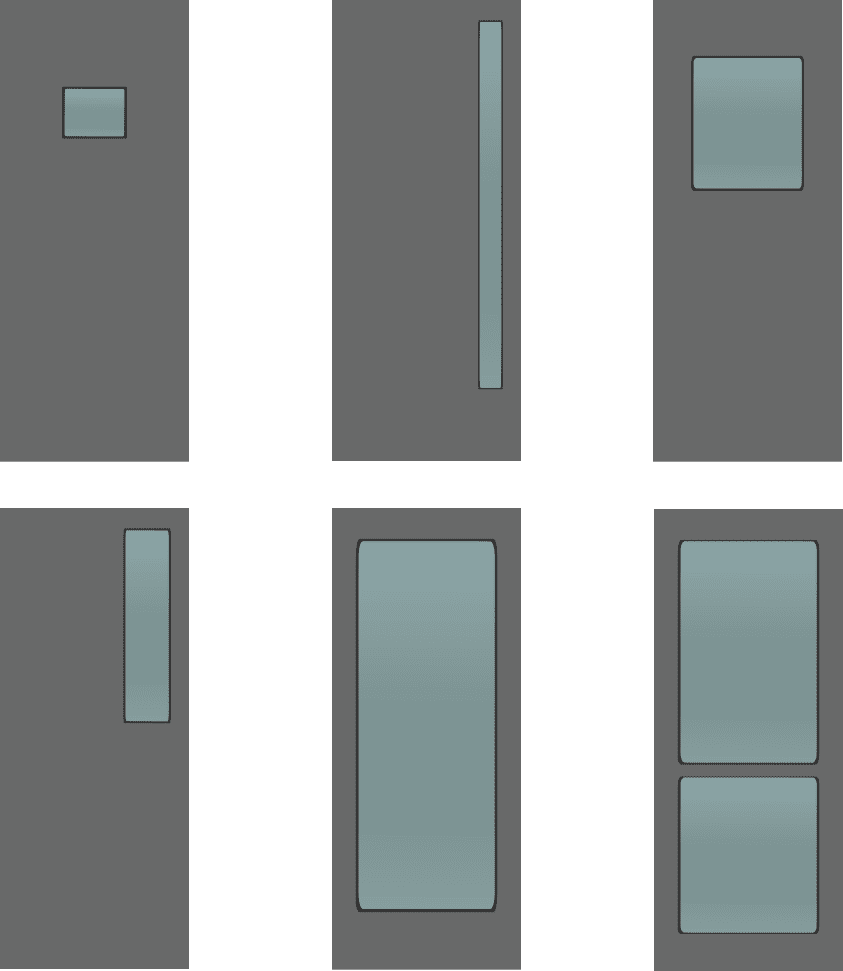
Types of Metal Door Frame Construction
Another critical aspect of door frames’ metal is the construction type. Before the Metal door frame installation, check if the construction type is suitable for your project needs.
Knock Down Metal Door Frames
- Shipped in pieces and assembled on-site
- Ideal for drywall or existing wall conditions
- Easier and more cost-effective to transport
Face-Welded Frames
- Welded at the face joints (where vertical and horizontal parts meet)
- Offers more strength than KD and faster installation.
Read: Difference Between Knock Down and Welded Door Frames
Full Profile Welded Frames
- Welded along the whole seam of the frame for maximum structural integrity
- Minimal visible seams create a smooth, clean appearance
- Best for high-traffic, heavy-use, or high-security areas
Metal Door Frame Profiles
- Double Rabbet: The most common profile; allows two doors or a door and sidelight, installed in the same frame.
- Single Rabbet: Supports a single door, typically used in more basic or residential-style openings.
- Equal/Unequal Rabbets: Used for specific design or functional needs where door thickness or spacing varies.
- Cased Openings: Frames with no door stops, used for open walk-throughs or archways.
Key Industry Standards for commercial metal frames and doors are:
Commercial metal doors and frames must follow specific building codes and performance standards. They work well and are safe.
- SDI 111 explains how to install stainless steel doors frames correctly.
- HMMA 861 gives clear instructions for using hollow metal doors and frames in commercial buildings.
- ANSI/SDI A250.8 sets performance grades so that you can match door strength to the building’s needs.
- The CSI Master Format 08 11 13 assists in creating specifications for hollow-metal doors and frames.
Fire-Rated Metal Doors Standards
Independent third-party testing agencies verify fire-rated doors. These doors must comply with the applicable fire safety and building codes, including
- NFPA 80: Fire Doors and Other Opening Protectives
- NFPA 101: Life Safety Code
- International Building Code (IBC)
- International Fire Code (IFC)
Fire-rated doors are tested based on the following standards:
- UL 10B & UL 10C: fire performance and positive pressure for door assemblies, respectively
- UL 1784: Specifies limits on smoke leakage through door assemblies
- NFPA 252: Outlines the standard fire testing methods for door assemblies.
Bottom Line: Build Smarter with the Right Metal Door Strategy
Choosing the right metal door is not just about looks. It must meet several needs for a commercial environment. They should adhere to compliance, have good durability, and meet business aesthetics and functional needs. When choosing doors, think about safety checks, compliance, and standards. Also, consider the cost to install commercial doors and frames.
Looking for commercial doors for your new construction project? We got you covered, Aorbis is a leading doors and hardware supplier, offering complete door solutions including doors, frame and hardware that ticks all the required compliance and safety checkboxes. Reach out to us at info@aorbis.com and get your estimation today!
FAQs
1. Why should you install a hollow metal door?
Hollow metal doors are good choice for several reasons, last longer, resist fire, and protect against forced entry. They need less upkeep than wood or fiberglass doors. This makes them a smart choice for both homes and businesses.
2. How great is steel for the front doors of a home?
Steel is strong, hard to break, and keeps out bad weather. It also insulates well, which helps manage indoor temperatures and reduce energy costs.
3. Which door is best, wood or steel?
Both steel and wood doors have their own unique advantages. Steel doors are strong, secure, and require little maintenance. Wood doors look warm and natural and can be shaped to fit custom designs. Choose the type of door material based on what matters more to you.
4. What is the best material for a front entry door?
Steel is one of the best materials for a front entry door. They are engineered for specific purpose. It lasts longer, keeps your home secure, and resists harsh weather. Follow our comprehensive guide on selecting the right storefront door for your business.
5. What is a prehung door?
A prehung door is sold already attached to its frame. It includes hinges and is ready to install as a full unit.
6. How to install a metal door frame?
Place the frame in the wall opening. Check that it is level and straight. Fasten it using screws or welds. Once secure, hang the door and attach the hardware.
7. What is the cost to install commercial metal door and frame?
The price of door installation varies depending on several factors. Door type and size are the key factors for the cost. Hardware type and installation complexities will also increase the amount when replacing an existing frame or addressing any structural issues.
- High durability and long lifespan
- Protects against rust, corrosion, and physical damage.
- Customizable as per aesthetic as well as functional need.
- Ideal for use in healthcare, food processing, and coastal Industries
